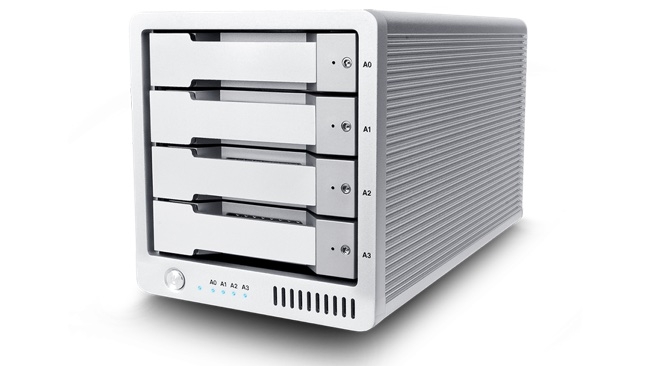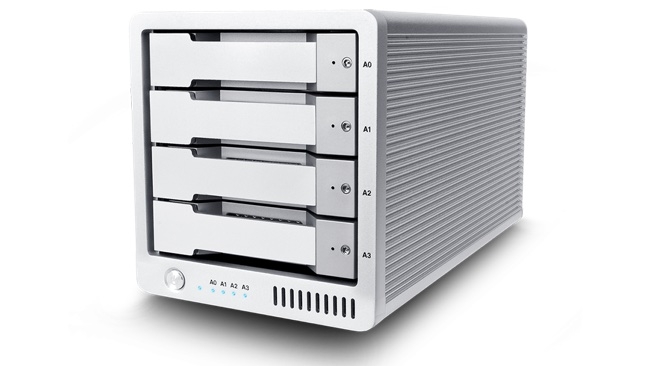

Barry Braverman on why he’s quite so impressed with the CalDigit Thunderbolt 2 RAID - HDD.
When contemplating a new purchase it sometimes makes sense to go cheap. Going cheap on a ballpoint pen, which you’ll use to complete your weekly grocery list, is probably okay. Ditto for the electric back scratcher that you’ll most likely use once for a second and a half and then toss it in your electrical hazardous waste heap. On the other hand going cheap on the primary media storage system that houses your bread and butter life- and career-sustaining projects is probably not a very good idea at all.
Truth is, I am not a fearful person but I must admit I am a tad nervous when it comes to offloading and storage of my original camera files. This is especially true while working in remote locations overseas where this most critical of all critical tasks must often take place in less than ideal conditions. Today’s data-heavy file-based workflow places my main storage volume at the core of everything I do, so naturally I demand a high level of security, along with the performance and throughput required for seamless editing of multiple video streams at 2K and 4K resolutions. Like most of us shooting at higher than 1920 x 1080 resolution I am concerned for the resulting much larger media files, which in turn must be efficiently accessed and properly managed.
Like most filmmakers and media professionals over the last two decades, I’ve suffered my fair share of hard drive failures. In most cases, from a technical perspective, the failure was not the drive itself but a defective controller board or flimsy interface connector. The latter issue befell me in 2007 while working on a feature project in remote Rajasthan in India; the FireWire connector on my so-called ‘ruggedized’ portable hard drive went intermittent and finally stopped working completely.
All of which explains why I’m quite so impressed with the CalDigit T4. Starting at £899 for the 4Tb model, the T4 doesn’t cut corners, which for fear-based producers and shooters is imperative. The tower itself accepts both 3.5-inch HDDs for economy and/or 2.5-inch SSDs for best performance and reliability. The beautifully machined aluminium unit is rugged as hell, and considerably more compact than other 4-drive RAID systems. The reduced size is important to me, as I must often transport the RAID tower on airplanes to meet with producers, or set up an impromptu workstation on the tiny desk provided in a hotel room.
The Thunderbolt 2-capable RAID for Mac has a current storage capacity of up to 20TB ($1999) and is configurable as RAID0, 1, or 5. For most shooter-filmmakers the RAID5 configuration makes a lot of sense. The striped drives and distributed parity offers high throughput and security for editing while being flexible enough to manage the hodgepodge of HD, 2K, and 4K source material increasingly common in feature and commercial projects.
My evaluated unit consistently achieved over 1300MBps actual throughput at RAID0 – just what the doctor ordered for 4K projects working with multiple streams.
Tags: Production


Comments